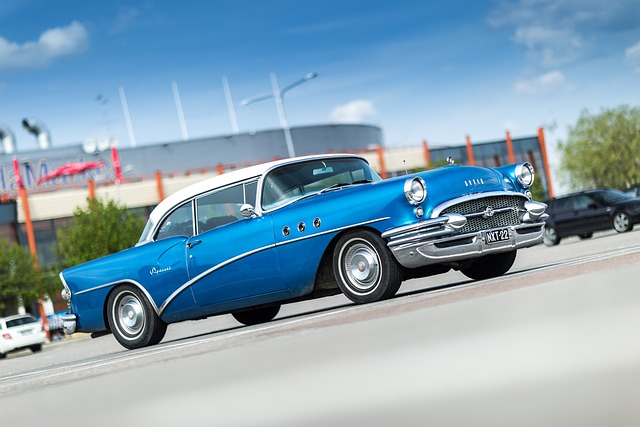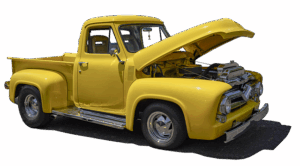Register Car California: Step-by-Step DMV VIN Verification Guide
“Unsure about how to register your car in California? This comprehensive guide walks you through the essential steps, from understanding key requirements to obtaining a Vehicle Identification Number (…….

“Unsure about how to register your car in California? This comprehensive guide walks you through the essential steps, from understanding key requirements to obtaining a Vehicle Identification Number (VIN) verification. Ensure a smooth process by gathering all necessary documents before visiting the DMV. Our step-by-step instructions cover completing applications and paying fees, culminating in receiving your license plate and registration documents. Master the art of California car registration with our expert advice.”
- Understand California Car Registration Requirements
- Gather Necessary Documents for DMV Visit
- Perform Vehicle Identification Number (VIN) Verification
- Complete Application and Pay Fees at DMV
- Receive License Plate and Registration Documents
Understand California Car Registration Requirements

Before registering your car in California, it’s crucial to understand the state’s specific requirements. The California Department of Motor Vehicles (DMV) mandates several steps for ensuring your vehicle is safe and legal to operate on public roads. One key step is the DMV VIN verification process, which involves checking the unique Vehicle Identification Number (VIN) to confirm the car’s authenticity and history. This includes verifying that it’s not a stolen vehicle or subject to any outstanding recalls.
Additionally, for peace of mind, consider opting for a mobile VIN verification or inspection service. These services send a professional to your location, eliminating the need to visit a DMV office. They use advanced technology to cross-reference your VIN with national databases, providing instant and accurate information about your vehicle’s history, including previous owners, maintenance records, and any potential issues.
Gather Necessary Documents for DMV Visit

Before heading to the DMV for car registration, ensure you have all the necessary documents in order. This typically includes your vehicle’s title, a valid driver’s license or ID card, proof of insurance, and registration fees. For out-of-state vehicles, an additional document known as the Certificate of Title or Bill of Sale may be required. If you’ve recently purchased a used car, don’t forget to bring along the previous owner’s documents for verification.
One crucial step in the process is the DMV VIN verification, which ensures that your vehicle’s unique identification number (VIN) matches the information on the title and other documentation. For added convenience, consider opting for a mobile vin inspection or vin inspection service, allowing you to complete this step remotely. This can save you time and hassle during your visit to the DMV.
Perform Vehicle Identification Number (VIN) Verification

Before registering your car in California, it’s crucial to ensure that the vehicle is genuine and has not been reported stolen. One critical step in this process is performing a Vehicle Identification Number (VIN) verification. This involves checking the VIN against official records to confirm its authenticity and history. Many individuals opt for a mobile vin verification or use a vin inspection service to streamline this task, as it can be time-consuming otherwise.
The California Department of Motor Vehicles (DMV) recommends this verification to prevent fraud and ensure consumer safety. A valid and accurate VIN is essential in determining the car’s eligibility for registration and insurance purposes. By cross-referencing the provided VIN with reliable databases, you can quickly gain access to detailed vehicle information, including its previous owners, maintenance records, and any reported accidents or damages.
Complete Application and Pay Fees at DMV

After gathering all necessary documents, it’s time to complete your car registration at the DMV. Visit a local California Department of Motor Vehicles (DMV) office with your identification, proof of insurance, and vehicle documentation. You’ll need to fill out Form SM 480, which is the Application for Title and Registration. This form requires detailed information about your vehicle, including its make, model, year, and unique Vehicle Identification Number (VIN). As part of the process, you’ll also pay the required registration fees.
Remember that accurate VIN verification is a crucial step in the car registration process. The DMV conducts this verification to ensure the vehicle’s history is clear and to prevent fraud. You can facilitate this by either providing a valid mobile vin inspection or visiting a specialized service for a formal vin inspection before heading to the DMV.
Receive License Plate and Registration Documents

After completing your vehicle’s purchase, the next step is to receive your license plate and registration documents from the California Department of Motor Vehicles (DMV). This process involves a crucial step known as DMV VIN verification. You’ll need to ensure that the vehicle’s Identification Number (VIN) is accurately recorded and cross-referenced with the state’s database. One efficient way to accomplish this is by utilizing a mobile vin inspection or mobile vin verifier service, which can streamline the verification process while saving you a trip to the DMV.
Once your VIN is verified, you can proceed with obtaining your license plates and registering your vehicle. The DMV will provide you with the necessary paperwork, including registration forms and any additional documents required for your specific situation. It’s essential to fill out these forms accurately and return them to the DMV along with the required fees to finalize the registration process. With these steps completed, you’ll have officially registered your car in California.
Registering a car in California involves understanding specific requirements, gathering essential documents, and completing a straightforward process at the Department of Motor Vehicles (DMV). By performing a Vehicle Identification Number (VIN) verification and submitting the necessary applications with the required fees, you’ll be on your way to receiving your license plate and registration documents. Remember, proper documentation and adherence to California’s car registration procedures ensure legal compliance and a seamless driving experience.







